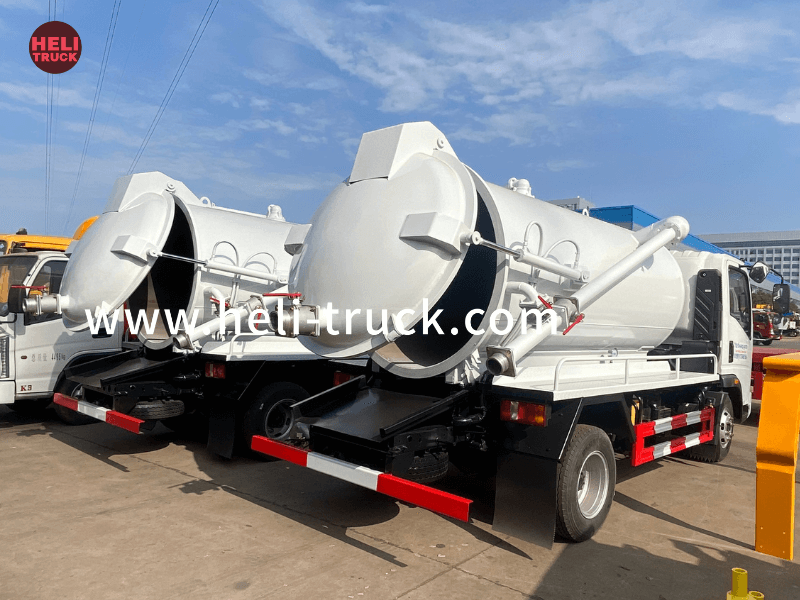Introduction
Garbage trucks play a vital role in maintaining the cleanliness and hygiene of our communities by collecting and disposing of waste. However, operating a garbage truck can pose various safety risks for both the drivers and the general public. In this article, we will discuss the importance of garbage truck safety and explore best practices and guidelines to ensure the safe operation of these essential vehicles.
Section 1: Understanding the Risks
Garbage truck drivers face several hazards while performing their duties. These risks include:
1. Traffic Accidents: Garbage trucks frequently operate in urban areas with heavy traffic, increasing the likelihood of collisions with other vehicles or pedestrians.
2. Backing Accidents: The large size and limited visibility of garbage trucks make backing up a common cause of accidents, leading to injuries and property damage.
3. Falling Objects: Improperly secured waste or malfunctioning equipment can result in debris falling from the truck, posing a danger to other road users.
4. Struck-By Incidents: Garbage truck drivers are at risk of being struck by passing vehicles while collecting waste or performing maintenance tasks.

Section 2: Best Practices for Garbage Truck Safety
To mitigate the risks associated with operating garbage trucks, drivers and waste management companies should adhere to the following best practices:
1. Pre-Trip Inspections: Conduct thorough pre-trip inspections to check for any mechanical issues, ensure all safety features are operational, and verify that waste is properly secured.
2. Defensive Driving: Garbage truck drivers should undergo defensive driving training to anticipate and respond to potential hazards on the road, such as erratic drivers or pedestrians.
3. https://www.heli-truck.com/best-garbage-truck-brands-a-detailed-comparison/ : Ensure that waste is loaded evenly and securely in the truck to prevent shifting during transit, reducing the risk of falling debris.
4. Use of Safety Equipment: Drivers should wear high-visibility clothing, safety vests, and personal protective equipment to increase their visibility and protect themselves in the event of an accident.
5. Avoid Distractions: Drivers should refrain from using mobile devices, eating, or engaging in other distractions while operating the garbage truck to maintain their focus on the road.
6. Safe Backing Practices: Utilize spotters or backup cameras when backing up the garbage truck to minimize blind spots and prevent accidents with pedestrians or other vehicles.
7. Regular Maintenance: Schedule routine maintenance checks for garbage trucks to address any mechanical issues promptly and ensure that all safety systems are functioning correctly.
Section 3: Regulatory Guidelines for Garbage Truck Safety
In addition to best practices, regulatory agencies and industry associations have established guidelines to promote garbage truck safety. Some key regulatory guidelines include:
1. Federal Motor Carrier Safety Administration (FMCSA): The FMCSA sets standards for commercial motor vehicles, including garbage trucks, to ensure compliance with safety regulations and driver qualifications.
2. Occupational Safety and Health Administration (OSHA): OSHA mandates workplace safety standards, including those related to waste collection and transportation, to protect workers from hazards such as falls, struck-by incidents, and exposure to hazardous materials.
3. National Waste & Recycling Association (NWRA): The NWRA provides resources and training programs to promote safety and best practices in the waste management industry, including guidelines for garbage truck operations.
4. Local Regulations: Municipalities may have specific rules and regulations governing the operation of garbage trucks within their jurisdiction, such as speed limits, noise restrictions, and designated collection routes.
Section 4: Technology Solutions for Garbage Truck Safety
Advancements in technology have introduced innovative solutions to enhance garbage truck safety. Some technology-enabled safety features for garbage trucks include:
1. Collision Avoidance Systems: These systems use sensors and cameras to detect nearby vehicles, pedestrians, or objects and provide alerts to the driver to prevent collisions.
2. Automatic Braking Systems: Automatic braking systems can help reduce the severity of collisions by applying the brakes if the driver fails to respond to an imminent collision.
3. Telematics: Telematics systems track and monitor garbage truck operations, providing data on driver behavior, vehicle performance, and route efficiency to identify areas for improvement and enhance safety.
4. Backup Cameras and Sensors: Backup cameras and sensors improve visibility when reversing the garbage truck, helping drivers avoid accidents with pedestrians or obstacles.
5. GPS Navigation: GPS navigation systems assist drivers in finding the most efficient routes for waste collection, reducing travel time and minimizing the risk of accidents.
Section 5: Training and Education Initiatives
Training and education are essential components of promoting garbage truck safety among drivers and waste management personnel. Some initiatives to enhance safety awareness and skills include:
1. Driver Training Programs: Implement comprehensive training programs that cover defensive driving techniques, waste handling procedures, and emergency protocols to equip drivers with the knowledge and skills to operate garbage trucks safely.
2. Safety Meetings and Toolbox Talks: Conduct regular safety meetings and toolbox talks to discuss best practices, share safety tips, and address any safety concerns or incidents that arise during garbage truck operations.
3. Online Resources and Courses: Provide access to online resources, safety videos, and training courses to educate drivers and employees on garbage truck safety practices and regulations.
4. Certification and Licensing Requirements: Establish certification and licensing requirements for garbage truck drivers to ensure they meet the necessary qualifications and training standards to operate these vehicles safely.
Conclusion
Garbage truck safety is paramount to protect the well-being of drivers, pedestrians, and the general public while maintaining efficient waste management services. By following best practices, adhering to regulatory guidelines, leveraging technology solutions, and investing in training and education initiatives, waste management companies can enhance the safety of garbage truck operations and reduce the risks associated with these essential vehicles. Prioritizing safety not only safeguards lives and property but also contributes to the sustainability and effectiveness of waste management practices in our communities.
